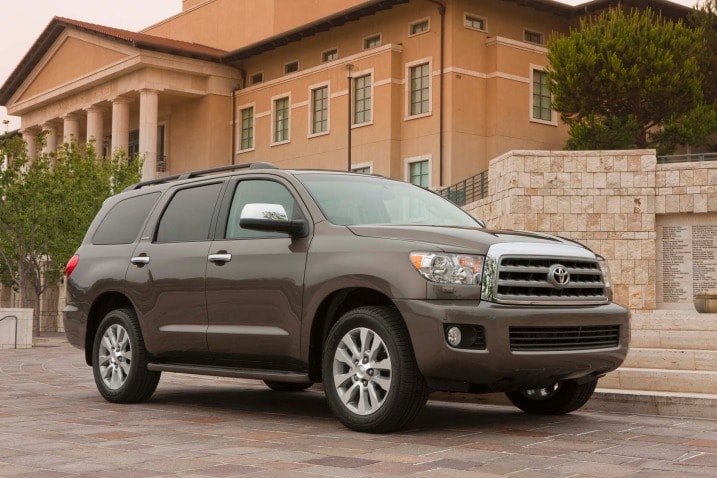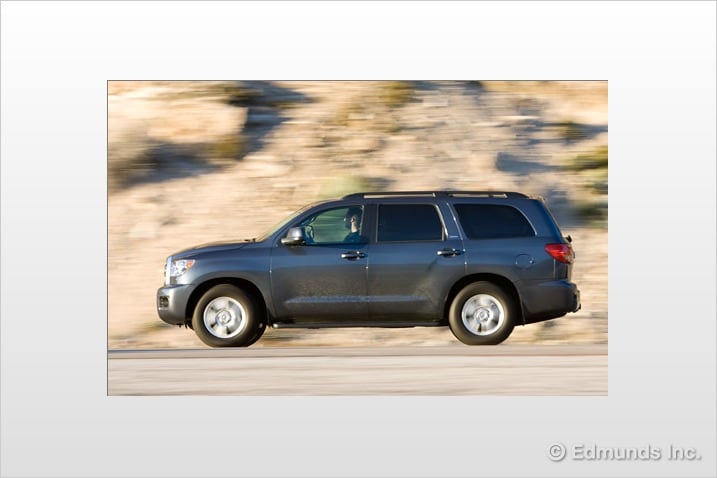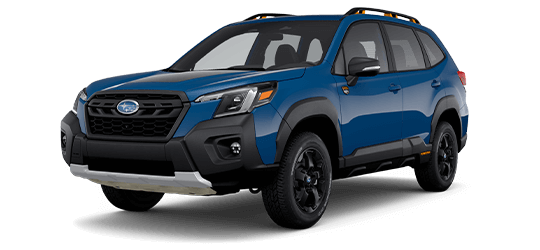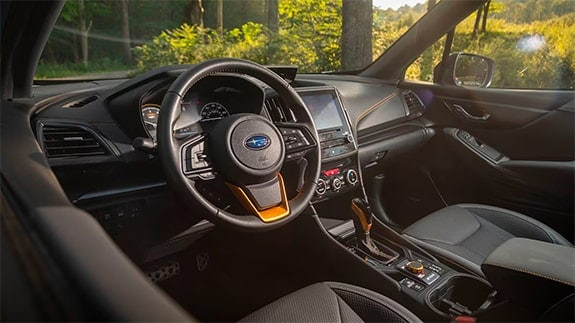Factor #6: Off-Road Capability
This differs from all-weather capability and it has more to do with having fun or exploring off-road trails than dealing with bad weather.
The gap between SUVs and CUVs is greater, because SUVs usually have a locking (or absent) center differential, a low-range transfer case and higher ground clearance. These allow a skilled driver to creep over rocks and get through deep sand and mud. Properly equipped, an SUV is the only type of vehicle suitable for off-road exploring.
CUVs don't have low range and their frameless undercarriages are more vulnerable. Their AWD systems are light duty and should stay clear of dirt roads that aren't reasonably maintained. Minivans, even those with AWD, have even less clearance and should stick to pavement whenever possible.
1st place:
Full-size, truck-based SUVs (lockable drive, low range, high clearance)
2nd place:
Crossovers (no low range, usually no locked mode, moderate clearance)
3rd place:
Minivans (limited AWD availability, low clearance)
Factor #7: Safety
Safety is usually discussed in terms of crash survivability. But in fact, safety is comprised of two subparts: passive safety and active safety.
Passive safety assumes a serious accident will happen, and so relates to discussions of passenger-protecting features such as airbags, seatbelts and crumple zones. Crash tests carried out by the NHTSA (National Highway Traffic Safety Administration) and the IIHS (Insurance Institute for Highway Safety) result in the familiar "star" (NHTSA) and "Poor" to "Good" ratings (IIHS).
From this standpoint, manufacturers have by and large learned how to build safe vehicles. Looking at our three groups — minivans, CUVs and SUVs — there are no overriding advantages related to configuration; all three categories have numerous five-star vehicles to choose from.
Active safety pertains to accident avoidance. Here the configuration of a vehicle has a big influence on two related factors: emergency maneuverability and rollover potential.
The ability to maneuver around an obstacle instead of hitting it doesn't show up in accident statistics, because the accident was avoided. But certain patterns have emerged, such as the greater susceptibility of traditional SUVs to roll over in an attempt to dodge something. SUVs have historically carried a warning label on their sun visors for this reason.
On the ratings front, NHTSA introduced a new star-based rating to describe a vehicle's rollover resistance. The test has two parts. A measurement called the Static Stability Factor (SSF) describes how tippy a vehicle is by comparing its track width to its center-of-gravity height. The other is a driving test to see how easily the vehicle tips over.
To understand SSF, consider a piece of wood: the common 2-by-4. If you lay it down flat, it is very resistant to tipping over — a high SSF. But if you put it on edge, it's easy to knock over — a low SSF. NHTSA's rollover resistance ratings are based on SSF measurements.
In strict SSF terms, a Corvette or Miata can get five stars. SUVs, as we currently know them, usually score three stars. Minivans and CUVs typically score four stars, with minivans at the upper end of the bracket.
The dynamic driving test, known as a fishhook maneuver, uses a robot to follow a prescribed maneuver to measure rollover. But there is another factor: Automakers that fit electronic stability control (ESC) to the majority of a particular model get to use ESC during this test. Because ESC inhibits the broadside spin this test creates, the conditions that produce rollover are averted. A vehicle on the bubble between three and four stars in SSF terms gets promoted to four stars as a reward for passing the fishhook test, something that the fitment of ESC ensures on SUVs that might otherwise have trouble with this maneuver.
While ESC is a great feature that will save many lives, we're going to concentrate on SSF for this analysis. Why? ESC is available on all SUVs, CUVs and minivans in our consideration set, so it's not a distinguishing characteristic. But it isn't always standard. In cases where you end up with an example that doesn't have the ESC option, raw SSF is particularly important to know.
Since these vehicle types also share good crash test ratings, we're going to make our call based on SSF. Maneuverability and rollover resistance both favor the lower, wider vehicle.
1st place:
Minivans (SSF range: 1.24—1.36*)
2nd place:
CUVs (SSF range: 1.18—1.27)
3rd place:
SUVs (SSF range: 1.14—1.20) * SSF = ½t ÷ h, where "t" is the track width and "h" is the center-of-gravity height.
Factor #8: Fuel Economy
This one is fairly straightforward. SUVs are larger, heavier and designed to pull heavy trailers, so they consume more fuel. Crossovers and vans are lighter and employ smaller engines, so they do better in fuel economy tests. Opting for the AWD version of any of these vehicle types hurts fuel economy slightly in most cases.
1st place (tie):
Minivans (16-17 mpg city/21-25 mpg highway)
1st place (tie):
CUVs (15-17 mpg city/22-24 mpg highway)
3rd place: SUVs
(12-14 mpg city/17-20 mpg highway)
Wrap-Up
As expected, large SUVs score best when it comes to towing and off-road performance, and worst when it comes to fuel economy and rollover resistance. They hold quite a bit of cargo, but lift-over is high and minivans hold more. Still, if your lifestyle includes towing a camper or large boat somewhere, an SUV is the best choice.
Crossover advantages over large SUVs include fuel economy, ease of loading cargo and safety. Available all-wheel drive gives them the snow traction coveted in certain parts of the country. But styling to make them look cooler than minivans and sleeker than SUVs ultimately limits interior seating space and cargo capacity. Crossovers are a very good choice, but they are held back by compromises that some might not want to make.
If there is any surprise here, it has to be the fact that more families aren't buying minivans. They haul more people and cargo, are easier to load and for kids to get in and out of (sliding doors rule), use the least amount of fuel and have the best combination of safety factors. With the exception of the Toyota Sienna, their biggest drawback is the lack of AWD for those who want it in snow country. Other than that single regional exception, minivans are still the best family haulers, period.



 by
by 
